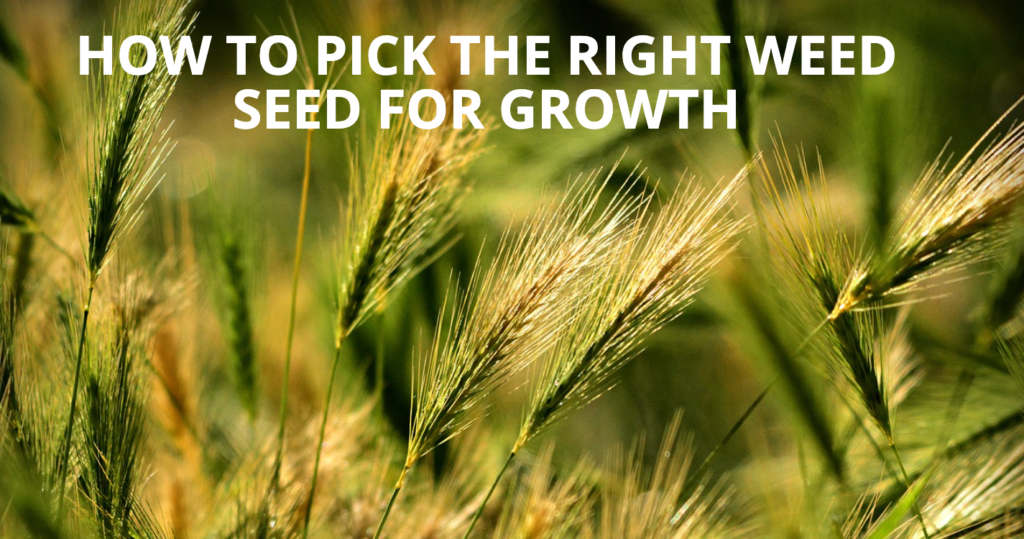Choosing the right weed seed is a foundational step for any cultivator looking to grow robust, healthy cannabis plants. Whether you’re a novice grower or a seasoned green thumb, selecting the right seed can make all the difference in your garden’s output and harvest quality. This guide will walk you through the critical factors to consider when selecting cannabis seeds, ensuring you start your growing journey on the right foot.

Understanding Seed Genetics and Strains
The genetics of your cannabis seeds are the most critical factor in determining the success of your growth. Seeds are generally available in three main types: regular, feminized, and auto-flowering. Each type has its specific growth patterns and care requirements:
– Regular seeds will produce male and female plants; growers need to identify and separate the males unless breeding is intended. These are a good choice if you want to experiment with breeding your strains.
– Feminized seeds are bred to produce only female plants, which are the ones that produce the bud cannabis is known for. Choosing feminized seeds simplifies the growing process by eliminating the need to sex plants and remove males, ensuring that all your energy goes into producing usable flowers.
Auto-flowering seeds are perfect for those who want a fast harvest. These seeds are bred to flower automatically after a certain period rather than depending on light cycles. This can be particularly useful for beginners or growers in climates that do not provide consistent, ideal sunlight.
Beyond the type of seed, strain selection is equally important. Strains are generally categorized into Indica, Sativa, and hybrids, each with growth characteristics and effects. Indica strains, for instance, typically grow shorter and bushier, making them suitable for indoor growing, while Sativa strains tend to be taller and might fare better outdoors.
Climate and Environmental Considerations
Your local climate plays a pivotal role in choosing the right cannabis seed. Some strains are more robust and can handle environments that are less than ideal, while others require specific conditions to thrive:
– Temperature and humidity tolerance: Consider a strain’s resilience to fluctuations in temperature and humidity. Some seeds, particularly those originating from equatorial regions, are more tolerant of high temperatures and humidity.
Resistance to pests and diseases: Some strains have been genetically engineered or naturally evolved to be more resistant to pests and diseases. This can be particularly beneficial if you live in a region with such problems.
– Size and growth patterns: Consider the plant’s growth potential and final size, especially if you’re restricted by space. Smaller, more compact plants might be the way to go if you’re an indoor grower with limited room.
Germination and Viability Tests
Before planting your seeds, conducting a simple germination test can help ensure that your chosen seeds are viable and likely to sprout. To test germination:
– Place a few seeds between moist paper towels and keep them in a warm, dark place. Viable seeds typically start to germinate within a few days.
Check for hard, intact shells and uniform color. Seeds that are pale, cracked, or crumbly are less likely to germinate. Good-quality seeds are generally dark in color and have a smooth, unblemished surface.
Performing this simple test can save you time and resources by confirming that your seeds can produce plants before you commit space and supplies to them.
Selecting the right cannabis seed involves careful consideration of your growing conditions, the genetic characteristics of the seed, and its potential to produce a high-quality plant. Understanding the basics of seed types and strains, considering your environmental conditions, and verifying seed viability can increase your chances of successful and rewarding growth. Remember, the right start is critical to ensuring a fruitful harvest. Finally, if you are wondering “how much are weed seeds”, especially the highest quality ones, then you can have all your questions answered in the following article!
